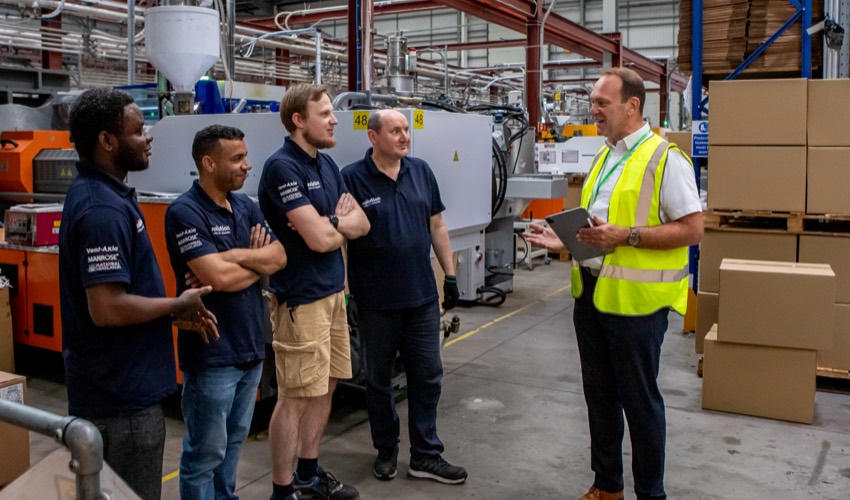Our ambition
To champion the energy saving potential of our products and solutions and support the net-zero ambitions of the countries in which we operate.
To continue to develop clean air solutions that protect people’s health and increase their comfort in an ethical and responsible way.
Highlights
| Category | Performance | Status | Comments |
| Low Carbon Sales | 70.1% low carbon products |
Ahead of target and already exceeding our 2025 goal. |
|
| Avoided emissions | 2,183,455 Avoided emissions (tCO2e) |
Avoided emissions resulting from the use of our heat recovery products sold in FY23 over their life time. |
|
| Heat recovery products | 33.8% Revenue from heat recovery products |
Sales of our energy saving heat recovery products continue to increase. |
Key:
Introduction to energy recovery technology
A key approach to decarbonisation of buildings, is preventing energy loss in heated or cooled air as it is exhausted from the building for ventilation. To prevent the energy loss, heat recovery cells can be used in the airstream to ensure the energy is recovered.
93%
Up to 93% efficiency in plate
heat exchangers
85%
Up to 85% efficiency from
rotary heat exchangers
Energy recovery technology types
There are four commonly applied types of energy recovery cells:
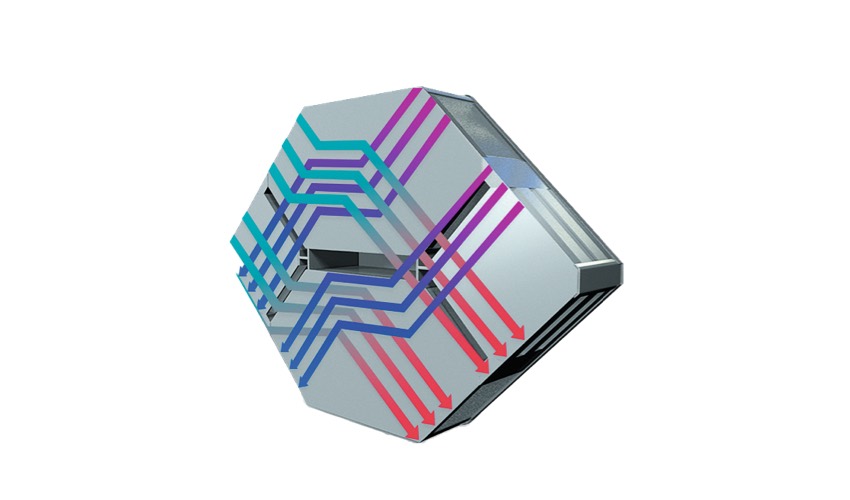
Plate heat exchangers
Plate heat exchangers consist of a series of plates stacked together which form a large internal surface area. Air is then exhausted from inside the building and passed over one side of the plates and at the same time fresh air is introduced into the building on the opposite side of the plates. The large surface area allows heat to be transferred from one side to the other in colder climates, the process recovers energy by passing energy from heated air leaving the building into the incoming air. By contrast in warmer climates with air-conditioned buildings, the process passes heat into the outgoing air. The exchangers can be up to 93% efficient.
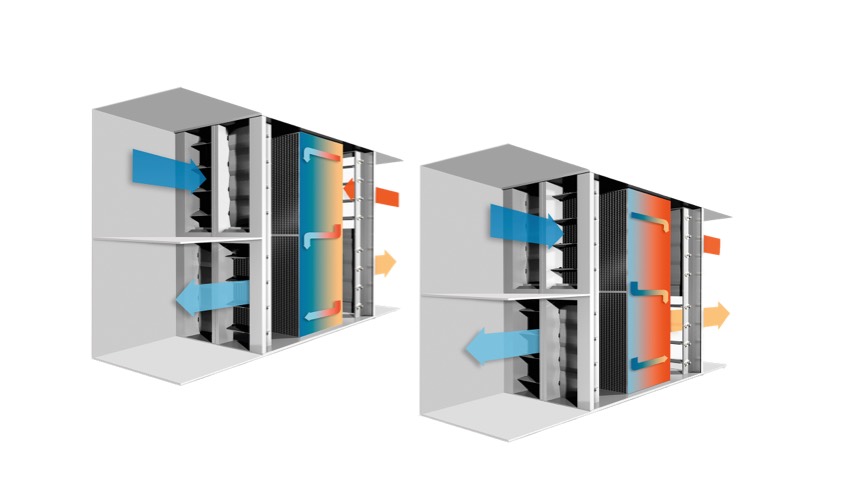
Accuair
In colder, dry climates, plate heat exchangers offer very high efficiency but can remove too much moisture from the air as it condenses on the colder sections of the plates. This can cause excessive drying out of the air. Accuair has been designed as an enthalpy system to also recovery up to 70% of the moisture. It does this whilst retaining an efficiency of up to 90% and prevents the air becoming too dry.
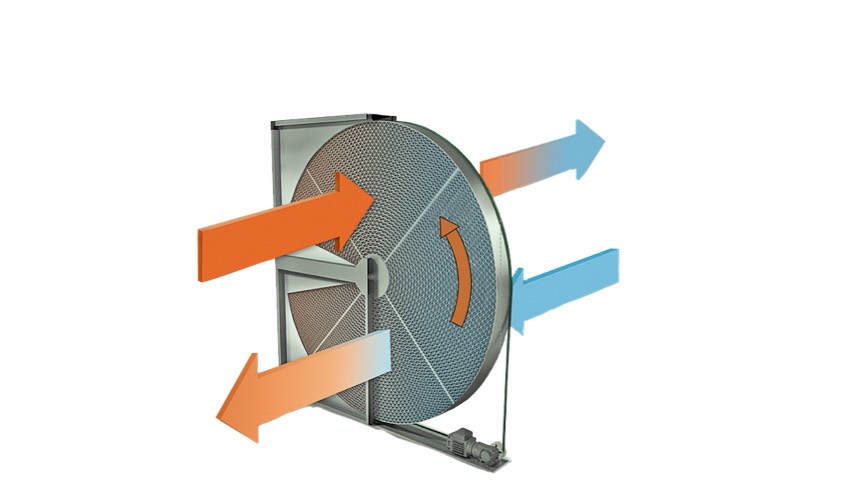
Rotary heat exchangers
Rotary heat exchangers are a regenerative type of air-to-air heat exchanger with a rotating wheel. During the heating season, air is exhausted from the building, warming the rotating disc. Air from outside is introduced across the opposite side of the disc recovering the heat, but also capturing the humidity released from the disk so enriching the air to prevent it drying out. This process provides heat exchangers with up to 85% efficiency.
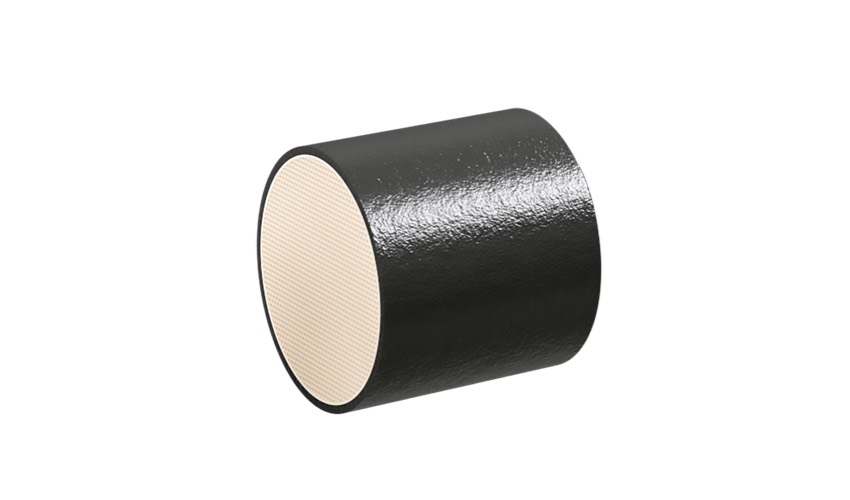
Regenerative Heat Cells
Regenerative heat cells work by acting as heat storage devices. Exhaust air passes through and warms the cell (ceramic) which store the heat. The ventilation system is then reversed, bringing air back though the heat exchanger and introducing the heat back into the incoming air. In this way heat can be recovered in a small, compact device which can be wall mounted for ease of application.
New low carbon products this year
Volution continues to invest in new product development, and this year we launched two new platforms for residential and commercial heat recovery.
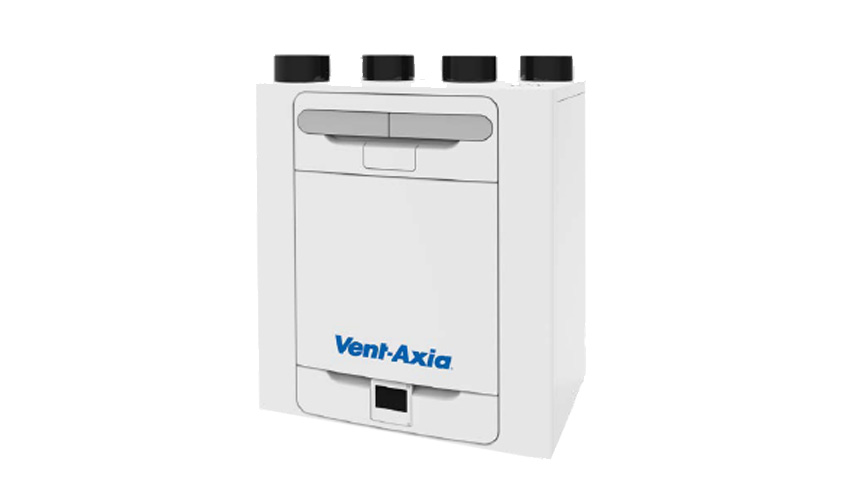
Vent-Axia Econiq – The new group platform for residential
We launched a next generation heat recovery platform across our European sales channels. The range consists of three sizes, with airflows up to 600m3h, enough for even the largest homes. The platform provides industry leading efficiency and low energy consumption, and also improves connectivity and control. With a suite of external and internal sensors, the range provides a new level of automation.. Using smartphonecompatible controls, the homeowner is in full control of ventilation all year round, with the flexibility to increase flow rate during hot periods or reduce speeds to minimise running costs while away.
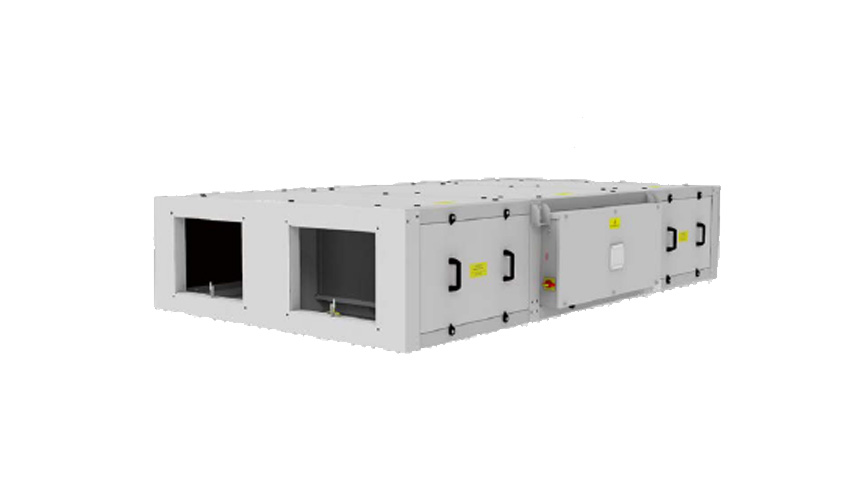
Sentinel Apex – Commercial heat recovery, simplified.
Our Sentinel Apex range of commercial heat recovery units, with up to 93% heat recovery efficiency and low sound levels, provides high levels of performance efficiently. A new advanced control system provides on board, in room, and App based control, full functionality commissioning and monitoring. Coupled with Vent-Axia’s new range of wired and wireless sensors close control and monitoring of indoor air quality is enabled. Sensors include CO2, humidity and temperature and provide both proportional and switch control.




